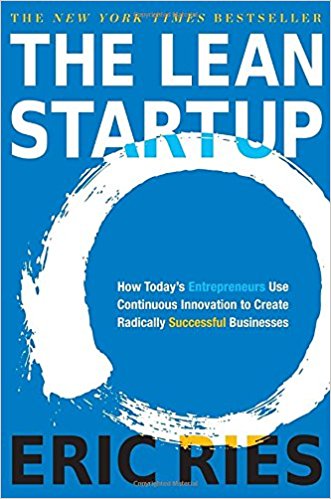outline
lessons learned from the lean startup

The Lean Startup book authored by Eric Ries has been sitting on my shelf for quite sometime now, so since I am currently contributing to the making of a startup I figured I’ll take a look into it.
The book is divided into 3 parts, after reading the first two I had my mind blown with the pragmatic and scientific approach to building startups that is described in the book.
In this post, I would like to share some important insights that I gained regarding building highly innovative businesses.
validating value proposition and growth strategy is the priority
Usually, a highly innovative startup company is working in its most early stage at building a product or a service that will create a new market.
Consumers or businesses have not been yet exposed to something similar to what is going to be built by the startup. Therefore the absolute priority for startups in early stage is to validated their value proposition i.e. to get real data about eventual customers interest regarding their product/service.
The other priority is to validate that the growth strategy that is going to be executed is, in fact, effective.
The growth strategy of a startup is its plan to acquire more and more customers in the long term and in a sustainable fashion.
Three kinds of growth strategies are described in the book:
- paid growth in which you rely on the fact that the customers are going to be charged for the product or service, the cash earned from early users is reinvested in acquiring new users via advertising for example
- viral growth in which you rely on the fact that customers are going to bring customers as a side effect of using the product/service
- sticky growth in which you rely on the fact that the customers are going to use the service in some regular fashion, paying for the service each time (via subscription for example).
These growth strategies are sustainable in the sense that they do not require continuous large capital investments or publicity stunts.
It is important to know as soon as possible which strategy or combination of strategies is the most effective at driving growth.
applying the scientific method
The scientific method is a set of techniques that helps us figure out correct stuff. After making some observations regarding a phenomenon, you formulate a hypothesis about that phenomenon.
The hypothesis is an assumption that needs to be proven correct or incorrect. You then design experimentations that are going to challenge the assumption.
The results of the experimentations makes the correctness or incorrectness of the hypothesis clear allowing us to make judgments about its validity.
In the lean startup methodology, your job as an entrepreneur is to formulate two hypothesis:
- hypothesis of value (assumptions about your value proposition)
- hypothesis of growth (assumptions about the effectiveness of the growth strategy)
These hypothesis are then validated/invalidated through experimentation. Following the precepts of lean manufacturing, the lean startup methodology prescribes to make experimentations while minimizing/eliminating waste.
In other words, you have to burn minimum cash, effort and time when running experiments.
An experimentation in the lean startup sense is usually an actual product/service and helps startups in early stage learn invaluable things about their eventual future market.
Sometimes startups learn that nobody wants their product/service, imagine spending 8 months worth of engineering, design and promotion work (not to mention cash) in a product/service only to discover that it does not provide value to anyone.
minimum viable products and feedback
As we pointed out earlier, an experimentation can be an actual product or service and is called the minimum viable product(MVP).
The MVP is built to contain just enough features to validate the value and growth hypotheses, effectively requiring minimum time, effort and cash.
By getting the MVP launched and in front of real users, entrepreneurs can get concrete feedback from them either directly by asking them (in focus groups for example) or via usage analytics.
Analytics scales better then directly talking to customers but the latter is nonetheless used to cross validate results from the former.
It is crucial to focus on metrics that creates fine grained visibility about the performance of the business when building(or using) a usage analytics system. These metrics are called actionable metrics because they can link causes and effects clearly allowing entrepreneurs to understand the consequences of ideally each action executed. Cohort analysis is an example of a analytics strategy that focuses on actionable metrics.
The bad kind of metrics are called vanity metrics, these tend to hide how the business is performing, gross numbers like total users count are an example of vanity metrics.
The author cites several examples of different startups that managed to validate or debunk their early assumption by building stripped down and non scalable MVPs and even sometimes by not building software at all.
You would be surprised to hear for example how the Dropbox folks in their early stage managed to created a ~4 minute video demonstrating their product while it was still in development. The video allowed them to get more people signed up in their beta waiting list and raise capital more easily.
closing thoughts
In the first two parts of the book, the author talks also about how employees inside big companies working on highly innovative products and services can benefit greatly from the lean startup approach, although very interesting this is not very useful for me right now.
The third part, talks about the challenges that arises when the startup gets big and starts to stabilize and how to address them. Basically it revolves around not loosing the innovative spirit of the early days, again, this is not very useful for me so maybe for good future reading.
